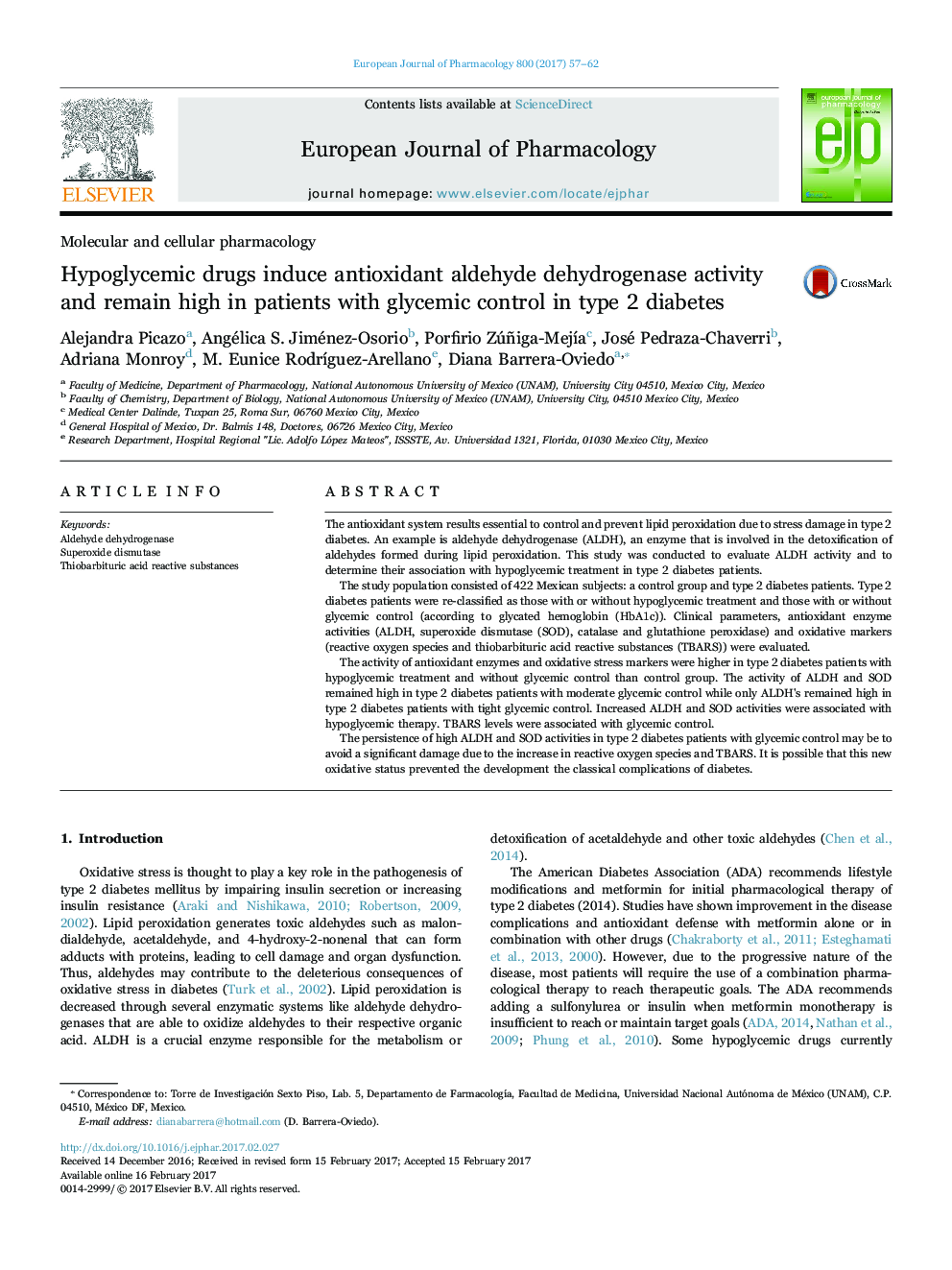| Article ID | Journal | Published Year | Pages | File Type |
|---|---|---|---|---|
| 5554639 | European Journal of Pharmacology | 2017 | 6 Pages |
The antioxidant system results essential to control and prevent lipid peroxidation due to stress damage in type 2 diabetes. An example is aldehyde dehydrogenase (ALDH), an enzyme that is involved in the detoxification of aldehydes formed during lipid peroxidation. This study was conducted to evaluate ALDH activity and to determine their association with hypoglycemic treatment in type 2 diabetes patients.The study population consisted of 422 Mexican subjects: a control group and type 2 diabetes patients. Type 2 diabetes patients were re-classified as those with or without hypoglycemic treatment and those with or without glycemic control (according to glycated hemoglobin (HbA1c)). Clinical parameters, antioxidant enzyme activities (ALDH, superoxide dismutase (SOD), catalase and glutathione peroxidase) and oxidative markers (reactive oxygen species and thiobarbituric acid reactive substances (TBARS)) were evaluated.The activity of antioxidant enzymes and oxidative stress markers were higher in type 2 diabetes patients with hypoglycemic treatment and without glycemic control than control group. The activity of ALDH and SOD remained high in type 2 diabetes patients with moderate glycemic control while only ALDH's remained high in type 2 diabetes patients with tight glycemic control. Increased ALDH and SOD activities were associated with hypoglycemic therapy. TBARS levels were associated with glycemic control.The persistence of high ALDH and SOD activities in type 2 diabetes patients with glycemic control may be to avoid a significant damage due to the increase in reactive oxygen species and TBARS. It is possible that this new oxidative status prevented the development the classical complications of diabetes.
